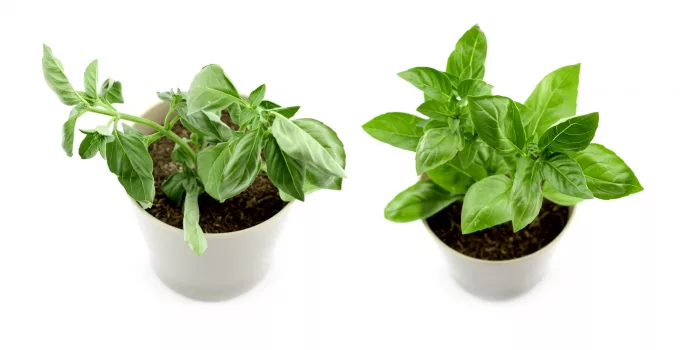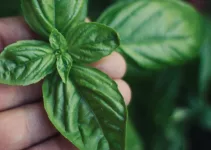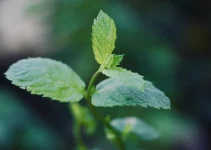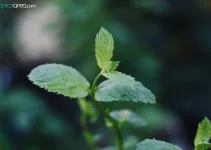There’s one thing to be assured of: if you have a basil plant wilting on your hands then the remedy is quite quick, the solution is simple.
But let’s establish one thing first so, you can be able to learn something from your experience with a basil plant wilting and prevent it from happening again.
Table of Contents
Basil Plant Wilting: 4 Main Causes

What causes a basil plant to wilt is actually, in my opinion, the most important thing to establish in this article because if you know the cause, you won’t let it happen again.
You might be aware of the factors already but there are four situations that lead to a basil plant wilting:
- the basil plant is not watered in time – the soil gets too dry and then the plant starts too wilt, it’s actually the most common cause for wilted herbs
- the plant suffers from a disease or is attacked by pests – at least the not-enough-water factor is a lot easier to handle than a disease
- you’re overwatering your plant – the plant will wilt but leaves can also turn yellow and even brown
- the temperature is too hot – it grows really well in temperatures that won’t exceed 90 degrees Fahrenheit (approx. 32 degrees Celsius)
How To Revive Wilted Basil
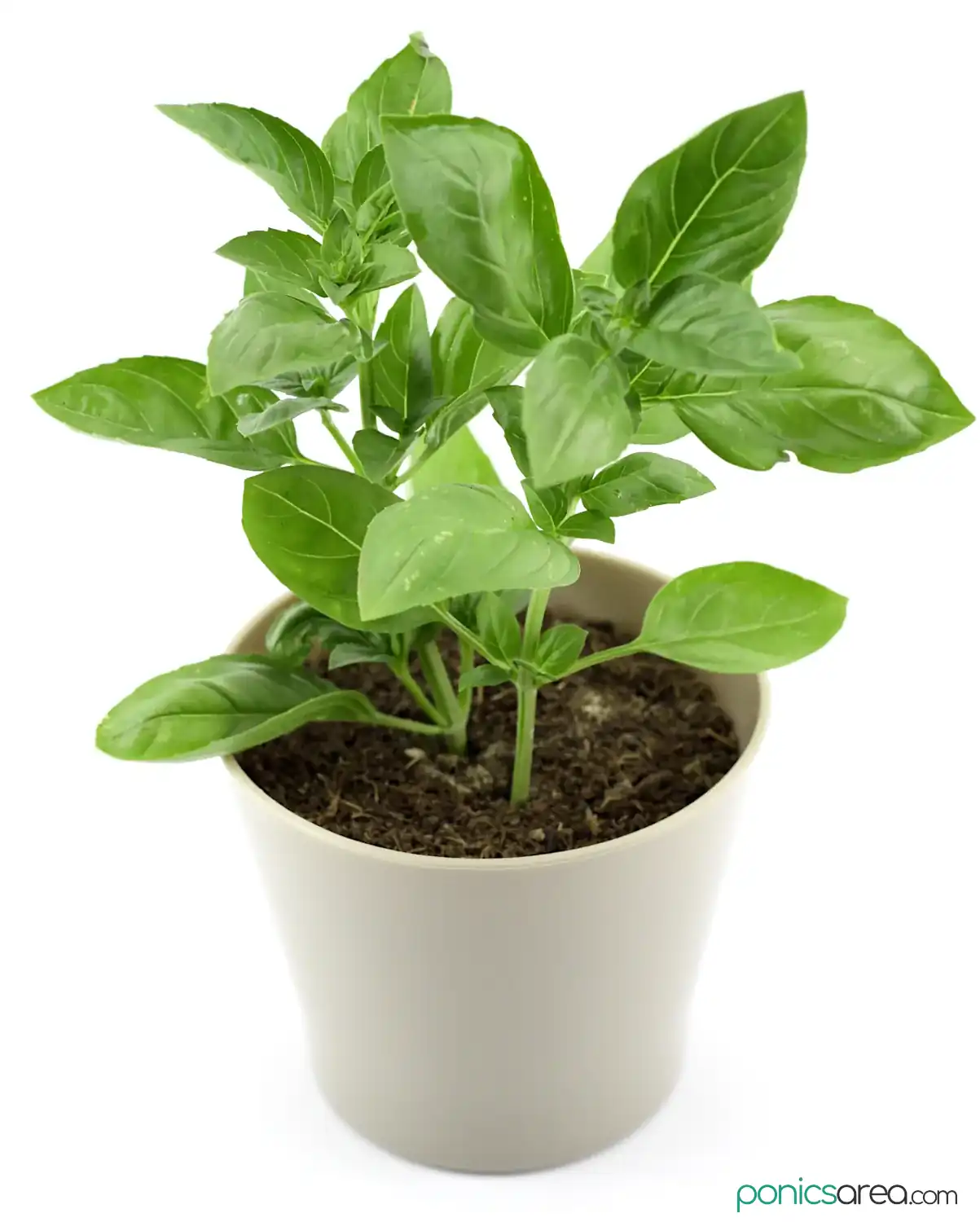
Wilted basil plant revived
Some methods to revive wilted basil are definitely more easier to handle than others. In some cases there’s nothing you can do, you’ll see what I’m talking about.
1. Wilted from Lack of Water
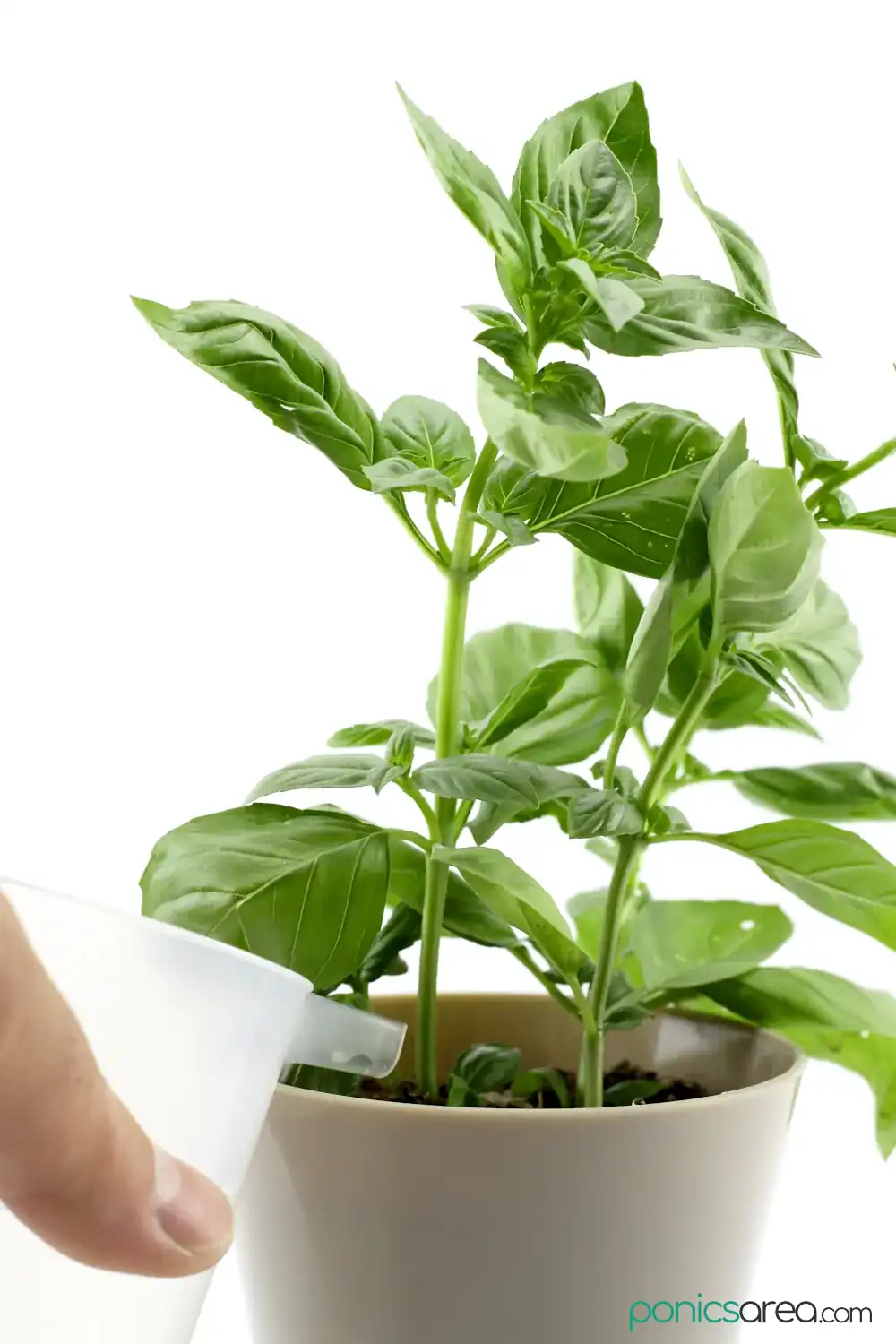
Wilted basil plant from lack of water
Basil requires a moist soil. Moist, not soggy, there’s a difference there. This moist soil can be achieved by watering it at least once a week.
If you’re growing herbs in your garden, 1 inch of water once a week will be enough. It might need more if the weather turns really hot and you notice the basil plant wilting.
There are some nuances to watering a basil plant and you can read a more in-depth guide here.
If you’re away from home and you’ve forgotten about watering your basil plant then it’s quite likely that you’ll be back to a wilted herb. It’s definitely happened to me.
The symptoms are:
- dusty, dull, pale leaves
- dry and brittle leaves if the soil gets really dry
- shrunken soil
- it’s not enough to have a moist soil at the top, you should check it at the bottom of the potted plant, too – there are holes at the base of the pot, make sure that the soil is as moist at the bottom as it is at the top
- you can check the soil on top to see if it’s moist enough by sticking a finger in, it should feel a bit cool and damp
The solution is:
- since we’ve established that the main cause of a basil plant wilting is the lack of proper watering then, you must water the soil as soon as you can
- the watering must be done until the saucer underneath the pot accumulates excess water
- after the first watering, wait for a few hours and if it looks like the soil is still dry at the bottom, water it again and that’s it
- it can be revived if you notice it quickly
This is actually the easiest cause for wilting basil plants to handle. Basil plants are pretty easy to grow and they can be quite resilient. Just giving it water can be enough and the next day the plant will be happy and looking healthy.
2. Wilted from too Much Water
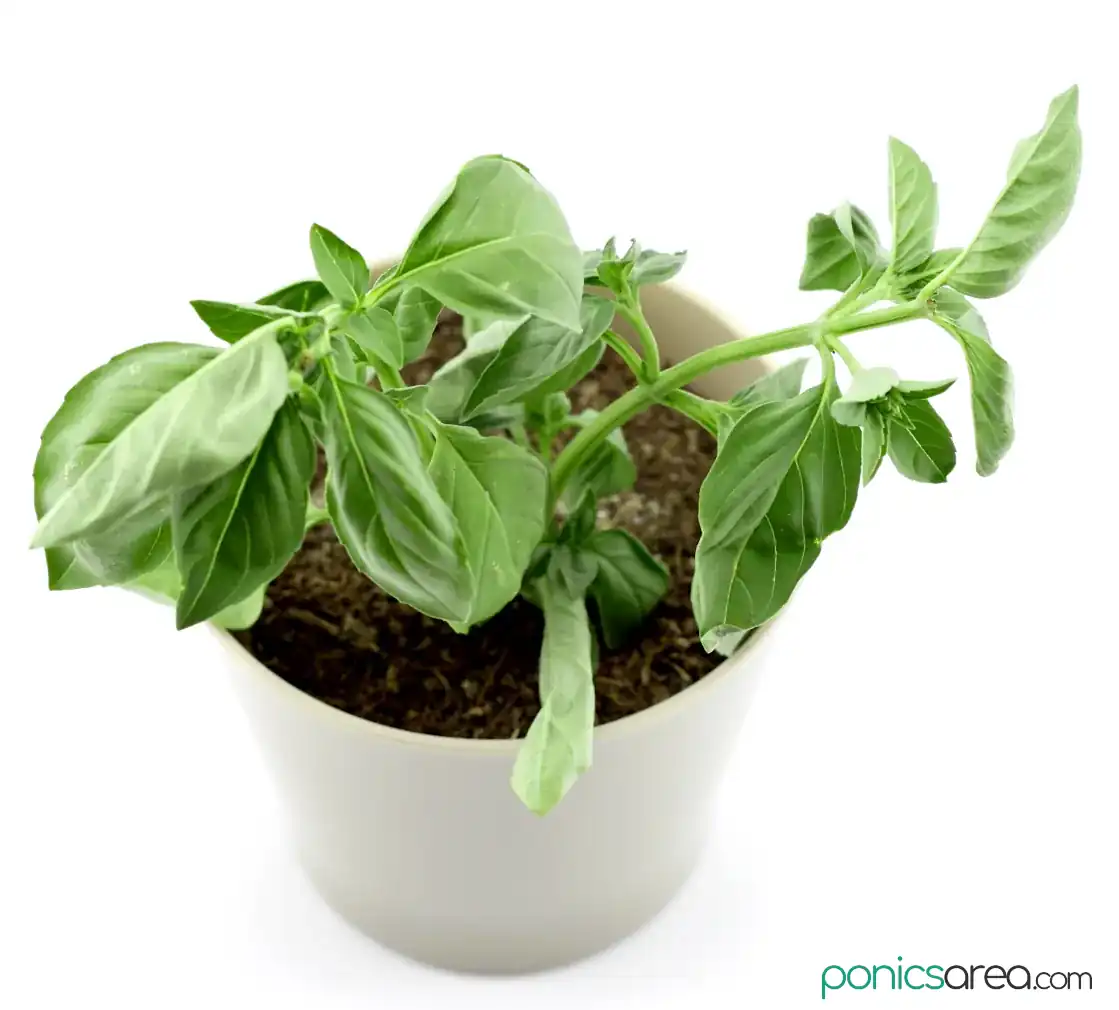
Wilted basil plant from too much water
Too much watering can easily lead to root rot, which will usually manifest in droopy plants.
This can happen to beginners who might be eager to see their plant grow and grow. It happened to most of us, excitement can make us a bit excessive when it comes to watering plants.
Excessive watering can be combined with bad drainage, which can easily kill a basil plant.
It’s pretty much a universal rule that plants need good drainage, whether we’re talking about herbs or lavender or succulents and the list can go on.
If you’re growing potted plants, ensuring that there are holes at the bottom of the pot is imperative. A tray will catch the excess water.
The symptoms are:
- droopy leaves
- yellow or maybe even brown leaves
- mildew and root rot – it happens especially if there’s a combination of too much watering and bad drainage
- blisters, bumps on the leaves
- algae growth (green tinge on the soil)
The solution is:
- the best action is to repot the plant (transfer it to a new pot) – ensure that your new pot contains a dry well-drained potting soil
- for better drainage, during the transplanting, you can add a layer of small pebbles at the bottom of the pot
- ensure that your pot has good drainage
- you can add organic matter/compost to the soil to avoid root rot
3. Basil Plant Wilting from Disease & Pests
Besides disease, pests can also cause wilting.
Spider mites and aphids can do that by sucking the sap from basil leaves.
You can spray the plant with insecticidal soap spray but you can also pick out these pests by hand.
Bacterial wilt is another factor that you must consider. It’s a disease that affects tomatoes and it will affect your basil if you’ve planted in the soil where the diseased tomatoes grew.
Fusarium wilt happens when there’s a fungus in the soil that will block the plants’ roots access to water. It’s also one of the most common fatal diseases for this herb, especially the sweet basil variety.
All these factors, pests and disease, mostly refer to basil that is planted in the garden.
The symptoms are: the plant looks droopy during the day but it recovers at night. As the disease advances, the leaves will turn yellow.
For the herbs affected by disease, the solution is simple but not pleasant: you’ll have to remove the affected plants and, considering that the fungus remains in the soil for years to come, you should avoid planting anything there.
It’s a final solution and not one geared towards reviving the herb.
To prevent that, make sure that the seeds you buy are fusarium tested, buy disease-resistant basil varieties.
Basil Plant Wilting in Hydroponics
If you’re growing hydroponic basil, some of the above situations with their causes, symptoms, and solutions for basil plant wilting don’t apply to you.
But that doesn’t mean that hydroponic basil is exempt from wilting. It can happen.
It seams that disease is one thing that both potted/outdoors-planted basil and hydroponic basil have in common.
Fusarium wilt can be a cause of wilting in this particular growing method, too. The easiest way to ensure that it doesn’t happen is to buy seeds that are fusarium tested.
If you have a diseased herb, you must sterilize or get rid of the growing media where it grew.
Basil plant wilting in hydroponics can also be caused by a lack of nutrients. Making sure that you feed your plants the proper nutrients is imperative no matter what you’re growing hydroponically.
If you want to ensure that it’s not the entire system that is causing the herb to wilt then you must clean the equipment. You can use 3% peroxide, which is obtained from combining one part 35% hydrogen peroxide with eleven parts of clean water.
Bleach can also be used to disinfect every part of your system but it’s not safe for plants. You must wait for the end of the growing cycle to use it safely.
One of the easiest solutions to hydroponic basil wilting is to transfer it to a container with potting soil. It might be easier to handle that way and you can see if it can be saved.
How to Properly Care for a Basil Plant
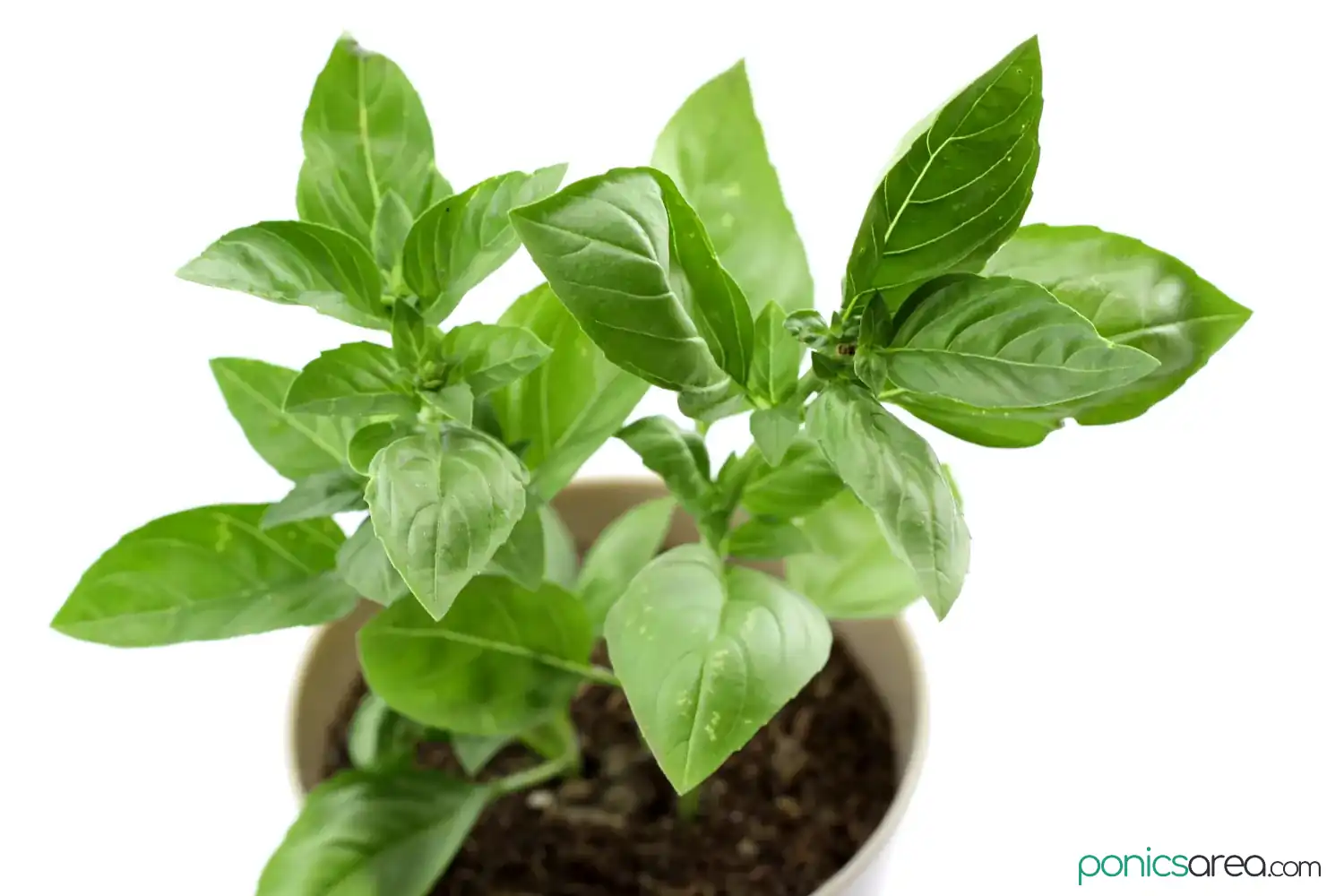
- ensure that the soil is always moist but not soggy
- in general, water it at least once a week
- this herb loves sun, it needs at least 6-8 hours of sunlight or LED grow lights
- it grows very well at 70 to 90 degrees Fahrenheit
- once it reaches 6 inches (about 15 cms) you should consider pruning – read here how to prune a basil plant to know exactly how easy and immensely beneficial it is, you shouldn’t skip this step
- pruning makes new fresh leaves to grow, which can keep a plant from wilting, as well
- prune the flowers before they bloom to maintain its flavor and prevent the leaves from becoming slightly bitter
- a good potting soil/potting mix will work
- usually, no fertilizer is needed
Although it’s not a nice thing to say, hopefully your basil plant wilting is caused by lack of water because that’s the easiest factor to handle and you can easily revive the wilted herb.

